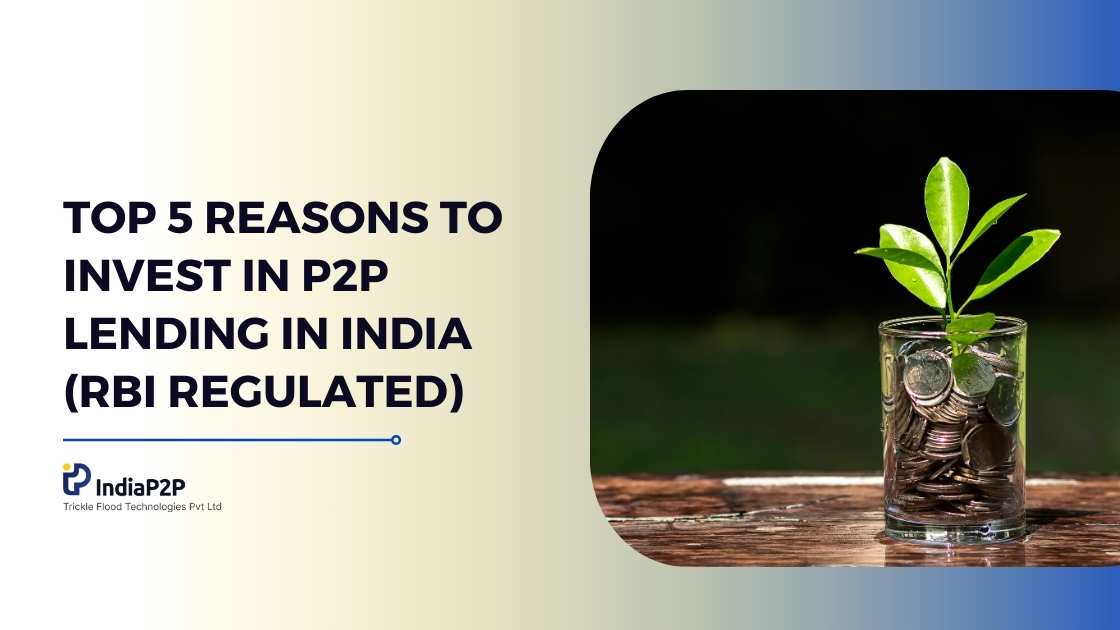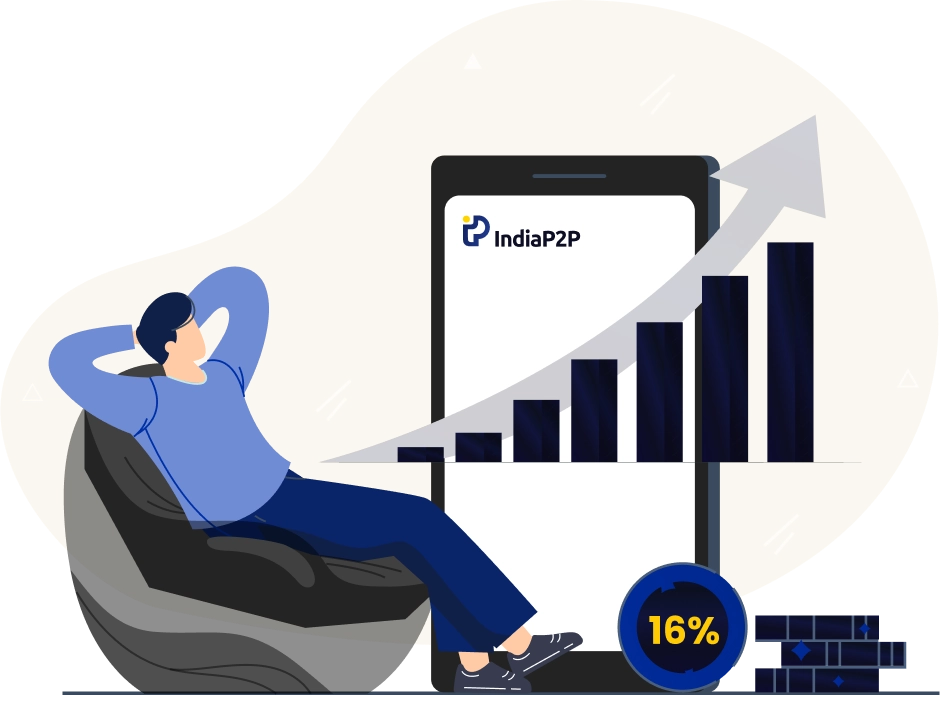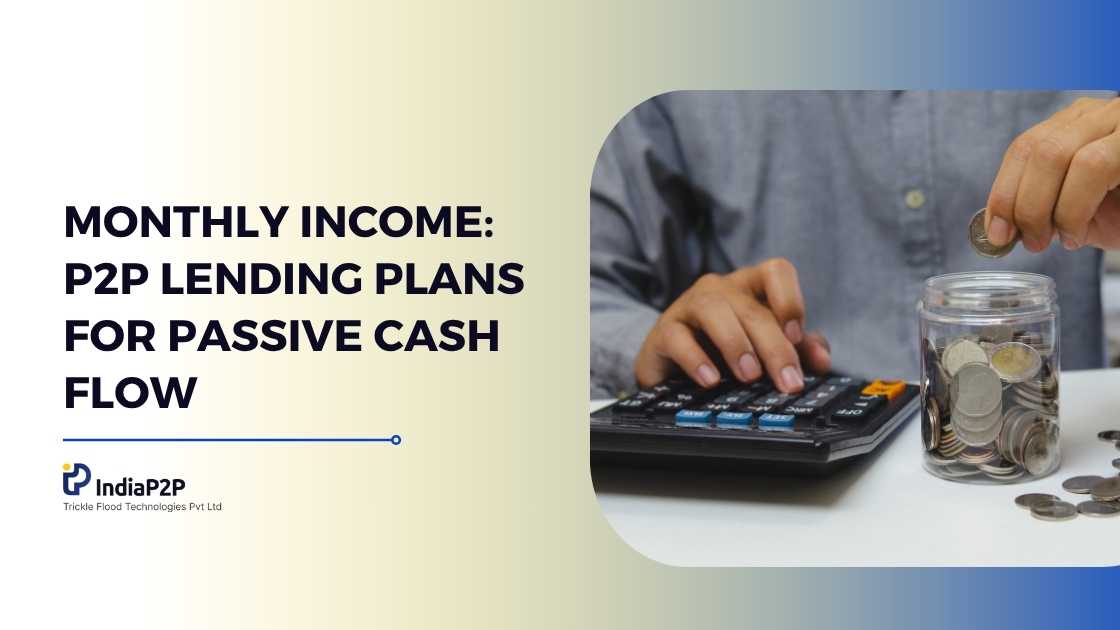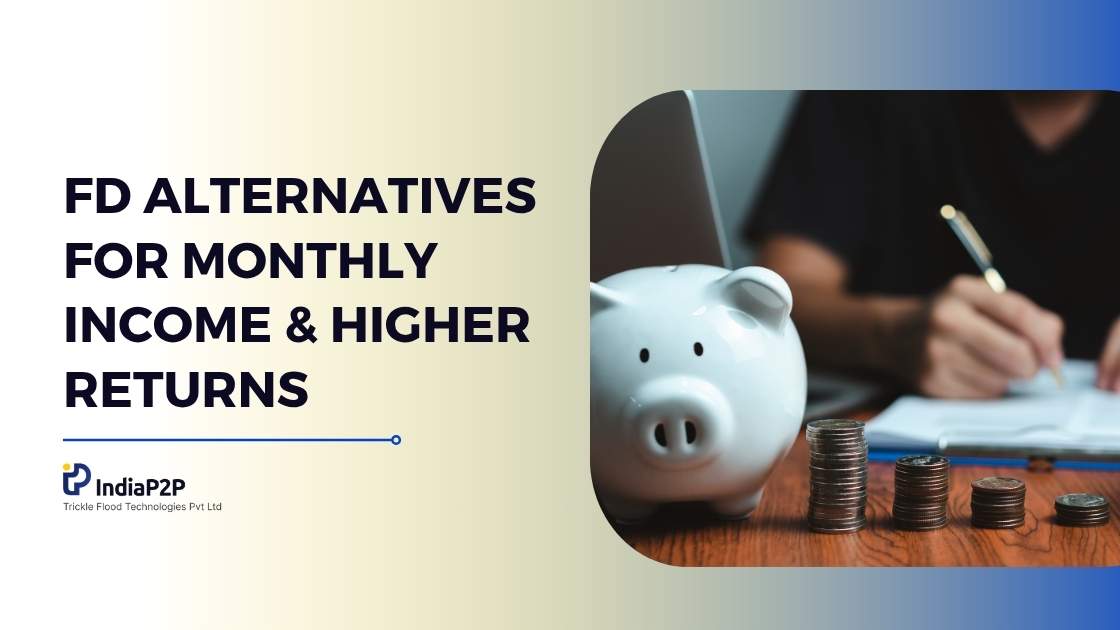Top 5 Reasons to Invest in P2P Lending in India (RBI Regulated)

We understand how you can often get confused between the different investment options. Today, we are going to share with you a few benefits of P2P lending so that you can decide for yourself whether it is a good investment or not.
In today's dynamic financial landscape, peer-to-peer lending, also called P2P lending, has emerged as an innovative and enticing alternative investment option. P2P lending platforms are becoming more popular among investors as they offer higher yields and more consistent passive income streams than traditional investing options, which might fall short of meeting investors' expectations.
With online platforms enabling average investors to access this asset class, and the Reserve Bank of India watching over this space, investor engagement is increasing rapidly.
A report by PwC suggests that India’s P2P lending sector is expected to touch USD 4 billion by 2026. While a report by IndustryARC aims at USD 10.5 billion, by the same time.
This innovative lending approach eliminates intermediaries like banks by enabling consumers to lend money directly to borrowers through online platforms.
It offers a unique opportunity to investors and borrowers alike. Investors get considerable returns on their investments compared to traditional savings accounts and government bonds, while lenders get loans at a rate lesser than traditional lenders. Both parties benefit by bypassing the middlemen, here, the financial institutions like banks.
People seeking a steady and passive source of income are drawn to P2P lending's fixed-income stream. Additionally, the opportunity to diversify assets among borrowers of varying risk profiles, makes it an alluring proposition for those looking to limit possible losses, while getting higher returns for riskier lending.
In this post, we'll delve deeper into the top five factors that make P2P lending a game-changer for investors.
5 Reasons to Invest in Peer-to-Peer Lending

High Returns & Fixed Income Cash flow (Advantages of P2P lending)
Higher Returns.
Comparing peer-to-peer lending to conventional fixed-income investments like bonds and certificates of deposit (CDs), P2P lending allows investors to achieve favorable returns.
Stocks are the only other type of investment that provides comparable or even higher returns than peer-to-peer lending.
However, investing in stocks may be a hit-or-miss proposition in a volatile market like the one we currently find ourselves in. The S&P 500 Index is down more than 20% for the year right around the end of 2022. P2P lending services, on the other hand, continue to pay out 10-12% or even higher rates in annual total returns.
In the current low-interest-rate environment, where other fixed-income options might give far lower yields, these gains can be particularly alluring.
The fixed interest income offered by P2P financing can be an additional income stream for you, while you can also reinvest the amount in either P2P loans or other asset classes.
Risk Mitigation & Diversification
There is risk involved with investing in P2P loans. Stocks, however, are comparable in this regard.
One of the other benefits of P2P lending is that it offers a good source for diversification.
Even more so, your return on Investment, or ROI, is variable with stocks. As a result, even while you might profit more than a P2P investor, you also risk making much less money or possibly losing some of it owing to volatility, and fluctuating stock prices. Stock price volatility in India was reported at a staggering 20.59% in 2021.
At the same time, P2P financing offers fixed-interest income.
P2P lending enables investors to create a diversified portfolio with loans of various risk levels, unlike traditional equities where market volatility can result in unpredictable returns.
Due to the distribution of losses from individual loans across the entire portfolio, this diversification serves to lessen the effects of possible defaults. Most P2P lending platforms also give investors comprehensive information about borrowers, including credit scores and loan goals, empowering them to make better-educated decisions and effectively manage risk.
Diversification is already incorporated into peer-to-peer lending. Spreading your investment across several loans will accomplish this. Because there are more loans in your portfolio, a single loan default will have less impact, lowering your portfolio's overall risk.
Investors may reduce their reliance on conventional assets like equities and bonds, prone to market changes, by including P2P loans in their investment portfolio.
A well-diversified portfolio aids in striking a balance between risk and return, strengthening it against economic downturns. Diversification can dramatically improve portfolio performance and lower overall risk, according to a study by the Harvard Business Review.
https://www.indiap2p.com/blogs/building-an-investment-portfolio-a-step-by-step-guidance
Passive Income
You must have heard or read somewhere that investing successfully requires spending a lot of effort on research and portfolio management. While this is undoubtedly true for most investment vehicles, P2P lending improves in this situation.
The primary distinction is that you can sit back and watch your money increase, while earning fixed interests, after investing through a platform.
The P2P platform, which typically handles everything related to your investment and the associated loans, including debt collection, helps you focus on other matters.
Another benefit of P2P lending is that it offers you the convenience of the auto-invest feature on P2P platforms. This feature invests your money on your behalf after you've locked in your investment preferences as part of setting up your investment account. You are not required to utilise it and can review every investment you have made carefully. Auto-invest is an excellent option to minimise the time and effort required for sustainable investing.
Asset Liquidity
Asset liquidity is one of the key factors influencing investment decisions. It gives you an idea of how easily you can liquidate your investments and get the cash out of them.
Bonds, for example, are typically held for extraordinarily long periods extending as long as 30 years. P2P loan periods, however, can range between 3 months and 36 months. Or, if you consider how the stock market operates, you may find that stocks are very liquid, but you run the risk of having to sell them at a loss. Therefore, you might do so with losses instead of locking in earnings.
Typically, you would wait for the borrower to repay the loan over the predetermined term using your loan investments. However, you can sell some or all of your loans on the secondary market, which is often accessible through P2P loan platforms, if you so want. This eliminates the need to wait until the loan is returned, making your investment more liquid. You won't lose any money on the sold loan, even though you might make less than you had hoped.
Regulatory Safeguards (Advantage of P2P lending)
Alternative asset classes are often unregulated, and as a result investors are often left with no legal recourse in case of scams or frauds. Even though alternative funds fall within the scope of Securities and Exchange Board of India (Alternative Investment Funds) Regulations, 2012, individual assets may lack specific regulations.
P2P lending, however, is a highly regulated space with the Reserve Bank of India (RBI) at the helm. RBI governs the regulation of P2P platforms vide its Peer to Peer Lending Platform (Reserve Bank) Directions of 2017, which provide for registration of NBFCs offering P2P lending platform services.
Additionally, the Directions outline the scope of activities of the lending platforms, transparency and disclosure requirements, and operational guidelines to be followed.
Being highly regulated, P2P lending is comparatively safer and more trustworthy in terms of investor confidence, and availability of legal recourses.
The Top 5 Reasons to Choose P2P in India
Reason 1: Higher Returns (Up to 18% A.P.R.).
Reason 2: RBI Regulation and Investor Safety.
Reason 3: Automated Monthly Cash Flow.
Reason 4: Guaranteed Micro-Diversification.
Reason 5: Low Correlation to Equity Markets.
Bottom Line
Investors seeking steady returns may find P2P lending an appealing alternative due to its potential for high returns, fixed-income streams, and decreased risk through diversification. P2P lending platforms also give investors a level of control and awareness frequently unavailable in other alternatives due to their openness, risk management practices, and strict observance of regulations.
The choice of investment platform is also crucial. You need to ensure that the platform is registered with the RBI, has good performance history, and is backed by credible founders and investors. In doing so, you will ensure that your investments are not loss owing to platform failures.
Like any investment, peer-to-peer lending comes with unique risks, so careful study is essential before making a financial commitment. It's a good idea to start modestly and build up your exposure as you get more comfortable with the platform and how loans are approved.
You need to be aware of the risks associated with P2P lending investments, including the potential loss of all or a portion of your investment. The best way to decide whether P2P lending aligns with your investment goals and risk tolerance is to speak with a financial advisor.
Therefore, if you want to diversify your investment portfolio and explore a potentially lucrative alternative investing channel, P2P lending may be a promising option.




